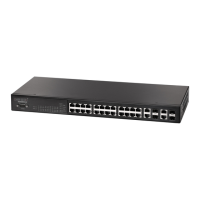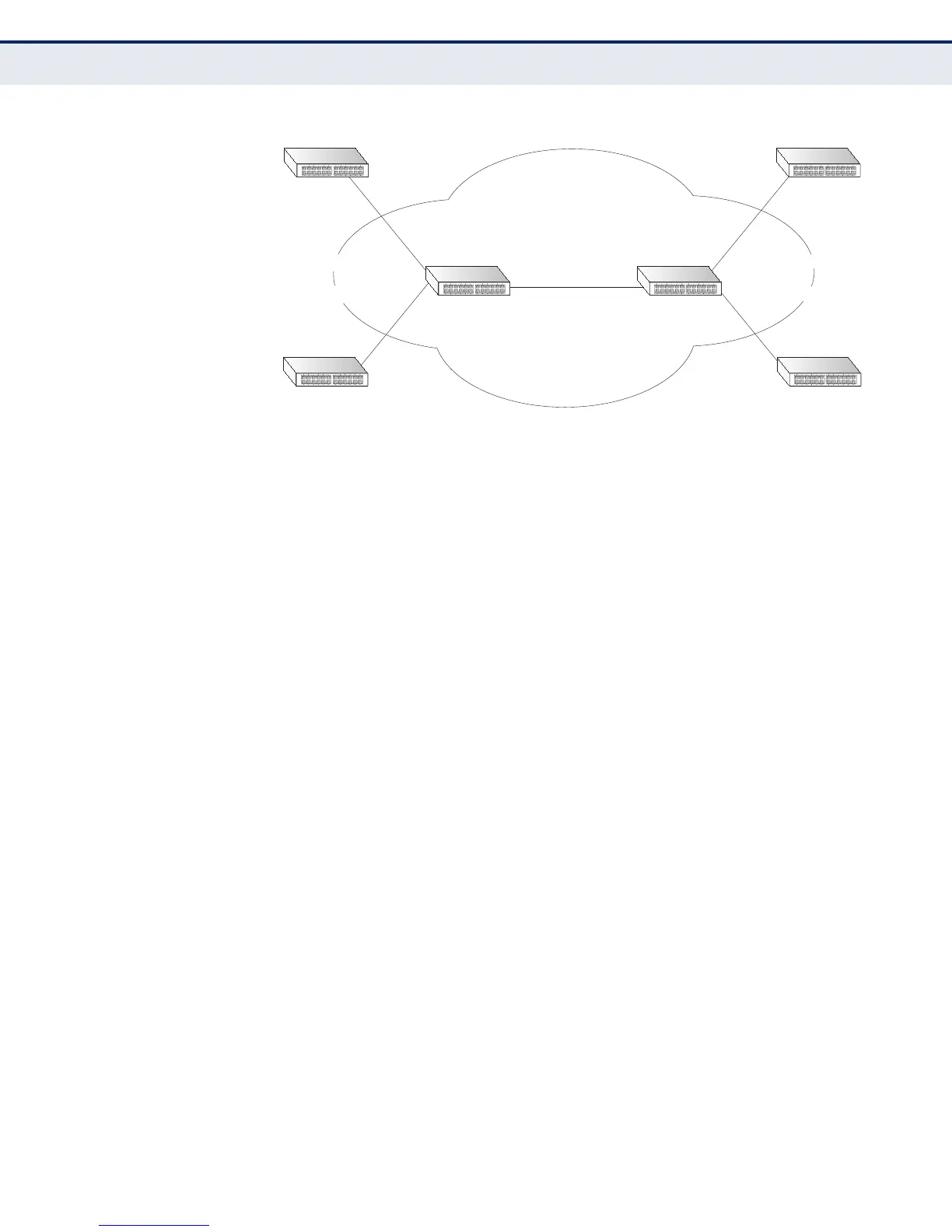C
HAPTER
6
| VLAN Configuration
IEEE 802.1Q Tunneling
– 207 –
Figure 78: QinQ Operational Concept
Layer 2 Flow for Packets Coming into a Tunnel Access Port
A QinQ tunnel port may receive either tagged or untagged packets. No
matter how many tags the incoming packet has, it is treated as tagged
packet.
The ingress process does source and destination lookups. If both lookups
are successful, the ingress process writes the packet to memory. Then the
egress process transmits the packet. Packets entering a QinQ tunnel port
are processed in the following manner:
1. An SPVLAN tag is added to all outbound packets on the SPVLAN
interface, no matter how many tags they already have. The switch
constructs and inserts the outer tag (SPVLAN) into the packet based on
the default VLAN ID and Tag Protocol Identifier (TPID, that is, the
ether-type of the tag), unless otherwise defined as described under
"Creating CVLAN to SPVLAN Mapping Entries" on page 211. The priority
of the inner tag is copied to the outer tag if it is a tagged or priority
tagged packet.
2. After successful source and destination lookup, the ingress process
sends the packet to the switching process with two tags. If the
incoming packet is untagged, the outer tag is an SPVLAN tag, and the
inner tag is a dummy tag (8100 0000). If the incoming packet is
tagged, the outer tag is an SPVLAN tag, and the inner tag is a CVLAN
tag.
3. After packet classification through the switching process, the packet is
written to memory with one tag (an outer tag) or with two tags (both
an outer tag and inner tag).
4. The switch sends the packet to the proper egress port.
5. If the egress port is an untagged member of the SPVLAN, the outer tag
will be stripped. If it is a tagged member, the outgoing packets will
have two tags.
Tunnel Uplink Ports
Double-Tagged Packets
Outer Tag - Service Provider VID
Inner Tag - Customer VID
QinQ Tunneling
Service Provider
(edge switch A)
Customer A
(VLANs 1-10)
Customer B
(VLANs 1-50)
Customer A
(VLANs 1-10)
Customer B
(VLANs 1-50)
Service Provider
(edge switch B)
VLAN 10
Tunnel PortAccess
Tunnel Port
VLAN 20
Access
VLAN 10
Tunnel PortAccess
Tunnel Port
VLAN 20
Access

